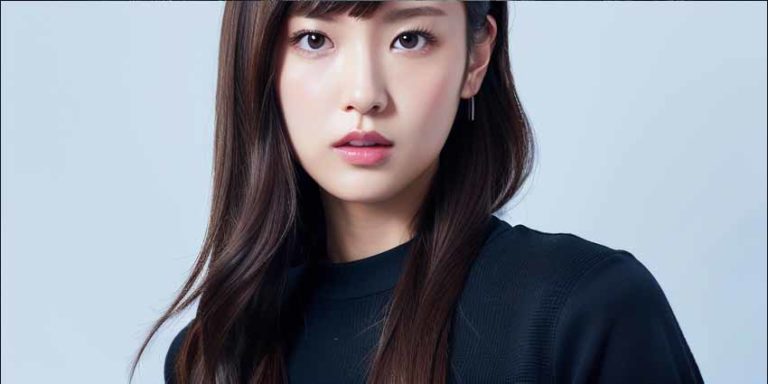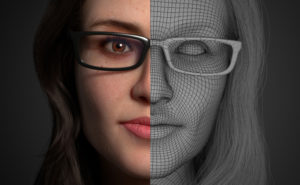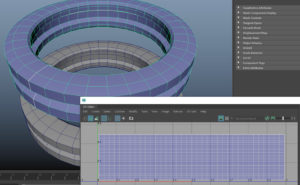In the realm of artistic expression, the rapid advancement of digital technology has sparked an extraordinary revolution that transcends the conventional boundaries of creativity. Digital art has emerged as a vibrant and dynamic medium, offering artists an innovative playground to manifest their wildest imaginations.
From breathtakingly realistic renderings of real life to mind-bending abstract compositions, the world of digital art has become a kaleidoscope of diverse styles, each representing a unique fusion of technique and emotion.
In this digital age, the traditional canvas is no longer confined to its wooden frame; it has evolved into a boundless virtual space where artists wield the power of pixels, algorithms, and other types of digital art tools to fashion mesmerizing works of art.
As we embark on this artistic journey, we shall delve into the captivating world of digital art styles, unlocking the secrets behind the digital brushes and filters that bring these masterpieces of digital paintings to life.
Whether you are a seasoned art enthusiast or someone new to the art scene, this exploration promises to unravel the mysteries of surrealism, pop art, cyberpunk, pixel art, and much more.
Join us as we venture into the realm of the digital artist creativity, unveiling the techniques, inspirations, and philosophies that shape the captivating array of styles defining modern-day digital art.
From the uncharted realms of imagination to the intricate techniques that underpin the world’s most captivating digital artworks, this article series aims to foster a deeper appreciation for the versatility and brilliance that technology brings to the world of the digital art world.
Step into the digital atelier with us as we decipher the language of pixels and uncover the boundless possibilities that await within the ever-expanding canvas of tomorrow’s artistry.
What Software to Use for Making a Digital Artwork?
In today’s technologically-driven world, the realm of artistic expression has expanded beyond the traditional canvas to encompass the exciting realm of creating digital art itself.
With an array of innovative software at our fingertips, artists can now unleash their creativity, transforming ideas into breathtaking masterpieces with the mere click of a button.
Adobe Photoshop
Undoubtedly, a household name in the creative industry, Photoshop is a versatile and powerful tool cherished by digital artists worldwide. Renowned for its extensive range of features, Photoshop allows artists to work with layers, brushes, filters, and a plethora of other tools to bring their visions to life. From photo editing and digital painting to intricate illustrations and digital collages, Photoshop remains an indispensable choice for professionals and enthusiasts alike.
Corel Painter
For artists seeking an authentic digital painting experience, Corel Painter offers an impressive selection of brushes that closely emulate traditional media. Whether it’s simulating oils, watercolors, or pastels, this software provides a realistic feel that will appeal to traditional artists transitioning into the digital realm. Corel Painter’s unique features make it an excellent choice for creating stunningly lifelike artwork.
Procreate
Designed exclusively for iPad users, Procreate has gained a cult following among artists seeking a streamlined and intuitive digital art platform. This app boasts a vast array of brushes, advanced layering capabilities, and a user-friendly interface, making it a top choice for artists on the go or those who prefer to work on tablets. Procreate’s fluid performance and affordable price make it a popular option for both beginners and experienced digital artists.
Autodesk SketchBook
Another powerful and user-friendly software, Autodesk SketchBook, is a favorite among artists seeking simplicity without sacrificing essential features. With an extensive library of brushes and customizable tools, SketchBook offers a seamless drawing experience. This software is available on various platforms, making it accessible to artists across different devices.
Clip Studio Paint
Originally tailored for manga and comic artists, Clip Studio Paint has evolved into an all-encompassing digital art software with a strong focus on illustration and comics. Boasting specialized tools for inking, screen tones, and panel creation, it remains a preferred choice for artists in the illustration and comic book industries.
GIMP (GNU Image Manipulation Program)
As an open-source alternative to Adobe Photoshop, GIMP offers a wide range of functionalities, making it an excellent option for artists on a budget. Despite being free, GIMP delivers a comprehensive set of tools for image manipulation, digital painting, and graphic design, making it a popular choice among the open-source community.
Choosing the right software for your digital art journey depends on various factors, such as your artistic style, budget, and platform preferences.
Each of the software mentioned above has its strengths and caters to specific artistic needs.
Whether you’re a seasoned professional or a curious beginner, experimenting with different software will help you find the perfect fit to bring your artistic visions to life.
Embrace the boundless opportunities of the digital canvas, and let your creativity soar to new heights!
Which are the different Digital Art Styles?
2D Digital Painting
2D Digital Painting is a form of digital art where artists use software and digital tools to create paintings with two-dimensional visuals. This versatile style allows artists to simulate traditional painting techniques, such as watercolor, oil, or acrylic, while harnessing the advantages of digital media, like unlimited color palettes, layering, and easy image editing. It offers a seamless blend of traditional artistry with modern technology, resulting in captivating and vibrant artwork.
Algorithmic Art
Algorithmic Art is a unique art form that involves using mathematical algorithms to generate visual patterns, shapes, and structures. Artists create or modify algorithms to produce mesmerizing and often intricate compositions that explore the boundaries of creativity and randomness. This style blurs the lines between traditional art, and science, giving rise to astonishingly complex and visually engaging pieces.
Fractal Art
Fractal Art is a subgenre of algorithmic art that focuses on creating intricate and self-replicating patterns known as fractals. These complex mathematical structures exhibit self-similarity, meaning they maintain similar patterns regardless of the level of magnification. Fractal Art is an art piece characterized by its mesmerizing detail and infinite complexity, offering viewers a mesmerizing journey into the world of abstract patterns.
Still Imagery
Still Imagery is a straightforward art style that revolves around creating static images that do not incorporate any animation or movement. It can encompass various art forms used, including photography, digital painting, or traditional illustrations. Still Imagery captures a moment frozen in time, often emphasizing composition, lighting, and subject matter to evoke emotions and tell powerful visual stories.
Pixel Art
Pixel Art is a unique digital art form where images are created by arranging individual pixels on a grid to form a picture. This style draws inspiration from early video games and computer graphics, embracing limited color palettes and low-resolution designs to create charming and nostalgic artworks. Pixel Art requires precision and attention to detail, resulting in visually captivating pieces integrated art with a distinctive retro appeal.
Projection mapping
Projection-Mapping, also known as spatial augmented reality, is an innovative art form that involves projecting visual content onto three-dimensional objects or surfaces. By precisely aligning the projected imagery with the physical structure, artists can create stunning visual illusions and transform ordinary objects into dynamic and immersive art installations.
Vector Painting or Vector Artwork
Vector Painting or Vector Art involves creating artwork using vector-based software, where images are built using geometric shapes, lines, and curves instead of pixels. This style allows for limitless scalability without loss of image quality, making it ideal for illustrations, logos, and graphic design. Vector Art is highly versatile, offering artists the flexibility to manipulate and edit shapes easily.
Raster Painting
Raster Painting involves creating digital artwork using raster-based software, where images are composed of pixels in a grid. This style of photo painting is similar to 2D digital painting but is specifically focused on using software with raster-based capabilities, like Adobe Photoshop. Raster Painting offers a wide range of brushes and effects, allowing artists to achieve realistic and detailed artwork.
What is Line Art?
Line Art is a minimalist art style that emphasizes clean, continuous lines to create images without any shading or color. It often includes intricate patterns and intricate designs, resulting in visually striking and bold artwork. Line Art is commonly used in illustrations, comics, and graphic design, where simplicity and clarity are essential.
VR Painting
VR Painting is an immersive art form that leverages virtual reality technology to enable artists to create three-dimensional paintings within a virtual environment. Artists wear VR headsets and use specialized controllers to paint and sculpt in a 3D space, offering a unique and interactive way for concept artists to bring their imagination to life.
2D Computer Graphics
2D Computer Graphics refers to any form of digital art that focuses on creating two-dimensional visual elements. This encompasses a broad range of styles, including the digital art industry, painting, vector art, and pixel art, among others. Artists use various software and tools to produce artwork that can be displayed on screens or printed on physical media.
Digital Photography
Digital Photography is the art of capturing images using digital cameras or mobile devices. Photographers of digital images use electronic sensors to record light and convert it into digital data, producing images that can be instantly previewed, edited, and shared in digital formats. This form of art allows the digital photographer to explore a diverse range of subjects and styles, capturing moments, emotions, and stories in vivid detail.
3D Computer Graphics
3D Computer Graphics involves the creation of three-dimensional images and animations using computer software. Artists use specialized 3D modeling software to design and manipulate virtual objects, scenes, and characters. This art form is widely used in various industries, including animation, video games, architectural visualization, and product design.
AI Digital Art

AI Digital Art is an emerging art style that harnesses artificial intelligence and machine learning algorithms to create or assist in the artistic creative process. AI algorithms can generate artwork, mimic various artistic styles, or aid artists in automating repetitive tasks. This style blurs the line between human creativity and computer-generated art, sparking debates about the role of AI in the art world.
Dynamic Painting
Dynamic Painting refers to an art style that incorporates movement or animation into still images. Artists use digital tools to add motion and visual effects, breathing life into their artwork. This style allows for captivating visual storytelling and a deeper level of audience engagement.
Digital Collage
Digital Collage is a modern art style that involves combining various digital elements, such as photographs, illustrations, textures, and graphics, to create a unified and visually intriguing composition. Digital collage offers artists endless possibilities for creating unique and imaginative artworks, often exploring themes of surrealism, fantasy, and conceptual storytelling.
In this ever-evolving landscape of mixed media and digital art, artists continue to push the boundaries of creativity, forging new paths of artistic expression that merge technology, innovation, and imagination to create captivating visual masterpieces.
Nyx, General Manager and Editor at Vertex Mode, is a seasoned 3D Artist in gaming and film, sharing insights on Digital Art and its creators.


